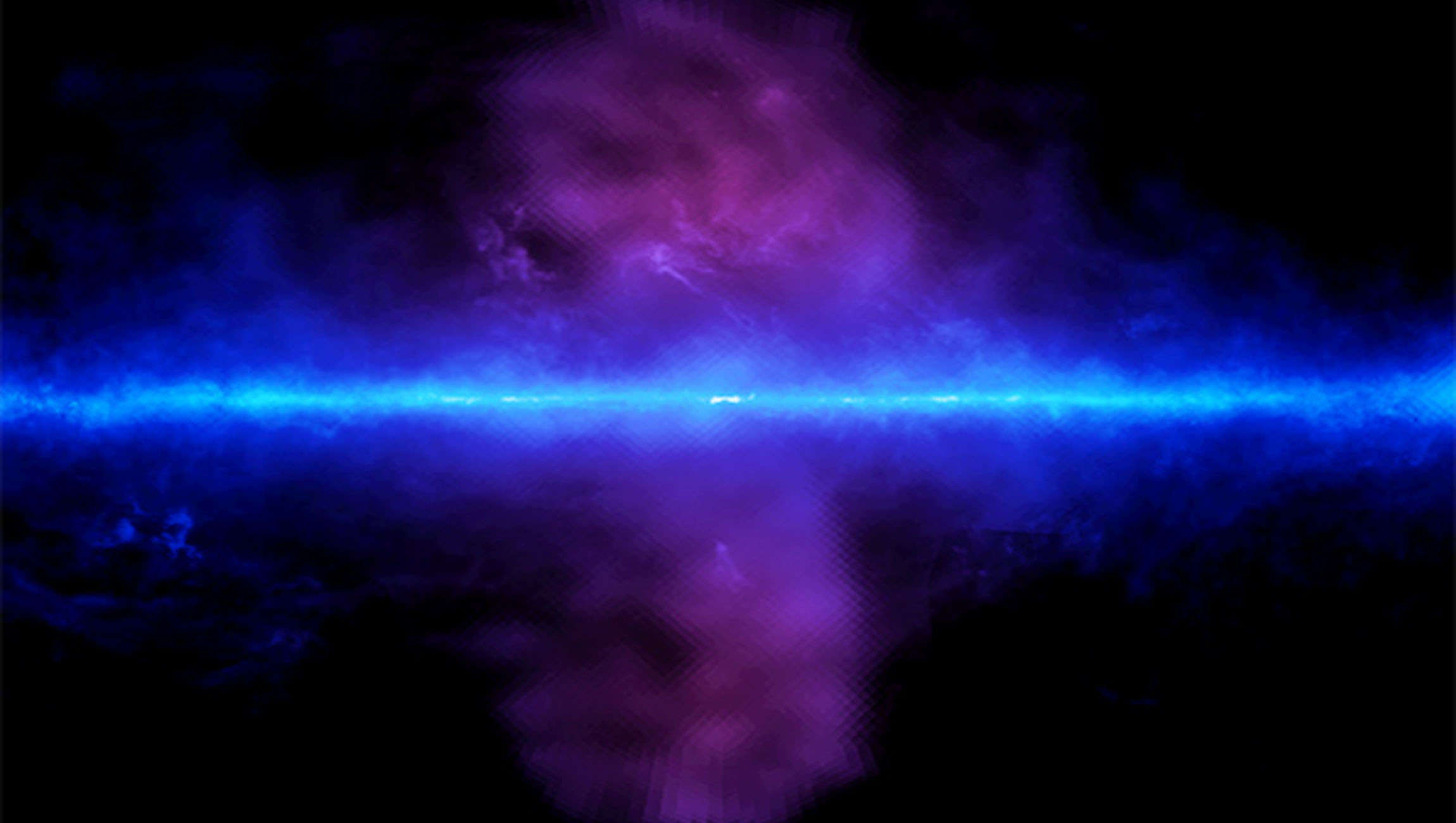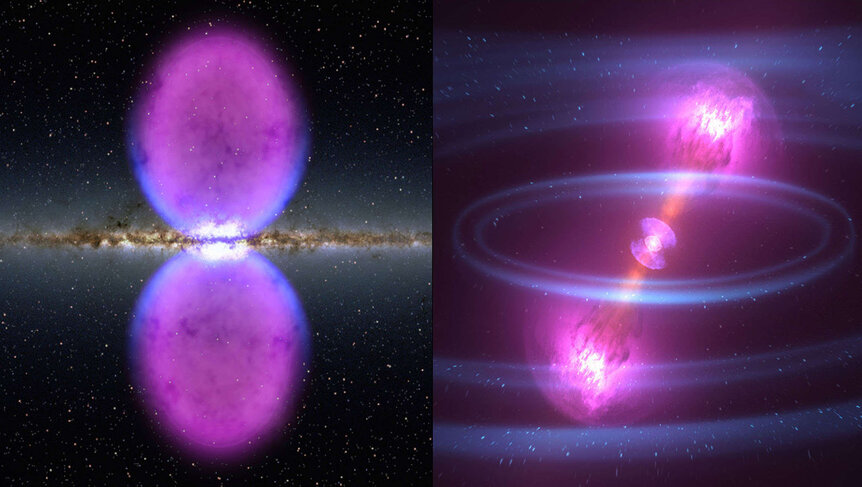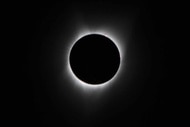Create a free profile to get unlimited access to exclusive videos, sweepstakes, and more!
Do black holes have indigestion? That could explain mysterious bubbles belched into space

Black holes don’t just devour things. They also spew enormous gas outflows into space, and when the supermassive black hole that lurks at the center of our solar system did that 6 million years ago, it may be the reason behind mysterious bubbles in the void.
What are now known as Fermi Bubbles are two gargantuan orbs of dust, gas and cosmic rays on either side of Sagittarius A* (Sgr A*), the Milky Way’s supermassive black hole. They were first discovered in 2010 by NASA’s Fermi Gamma-Ray Telescope. Gargantuan doesn’t even begin to cover it—they stretch 50,000 light years across. They also kind of look like a psychedelic hourglass in the colorized NASA image above (otherwise the human eye would be unable to see them). Now astrophysicists Ruiyu Zhang and Fulai Guo believe that these bubbles and their surrounding gamma rays and X-rays emerged when our supermassive black hole belched them into being.
“Despite numerous studies on the bubbles, their origin and emission mechanism remain elusive,” Zhang and Guo said in a study recently published in The Astrophysical Journal, explaining that they “[used] simulations to study the scenario where the cosmic rays in the bubbles are mainly accelerated at the forward shocks driven by a pair of opposing jets from Sgr A*.”
By running simulations of the massive outflow event, which was happening just as humans began to walk on two legs, the scientists found that intense gas jets on either side of Sgr A* were able to produce such bizarre bubbles on either end of the black hole. You don’t mess with outflows that escape a black hole. Powerful and wide enough outflows can rip through the black hole’s surrounding halo of gas and create immense shock waves. In the simulations, these shock waves forced the gas into the same shape as the Fermi Bubbles as they compressed and heated it. The edges of the shock waves pushed the bubbles further and further out into space.
Observations that had previously been made also matched up with the simulation results. Simulated jets of gas had energy levels consistent with those emitted by supermassive black holes in other galaxies, and the temperature the gas skyrocketed to when it was heated by shock waves was also consistent with that revealed by X-ray observations of the bubbles.
“The forward shocks compress the hot halo gas, and at low latitudes, the compressed gas shows an X-shaped structure,” Zhang and Guo explained.
The entire process took about a million years, which is how long it took for those uber-powerful jets to die down, and can explain the bubbles’ strange morphology. It took another 5 million years for the bubble to reach the almost unfathomable size they have now reached. The most cosmic ray acceleration was thought to have taken place in the heads of the bubbles during the first two million years of their existence, but even though expansion slowed down, they still continued to get more and more monstrous. There are also bubbles around the bubbles, radio wave structures which the scientists believe could have been the result of a smaller shockwave event later on.
Could there be other supermassive black holes belching bubbles right now? If it happened here, it could happen anywhere out there.















